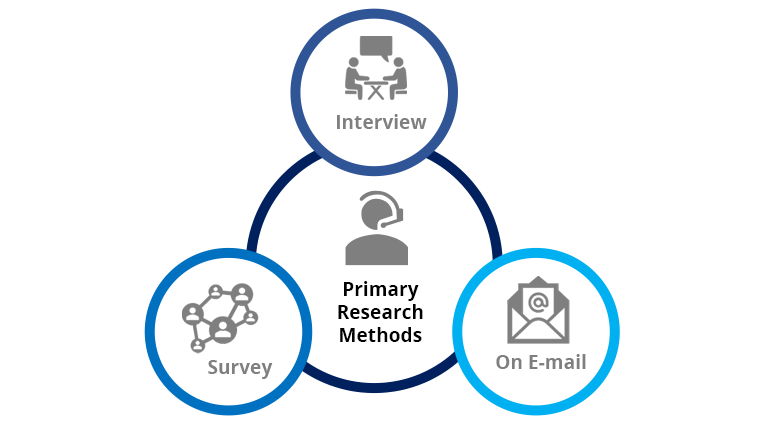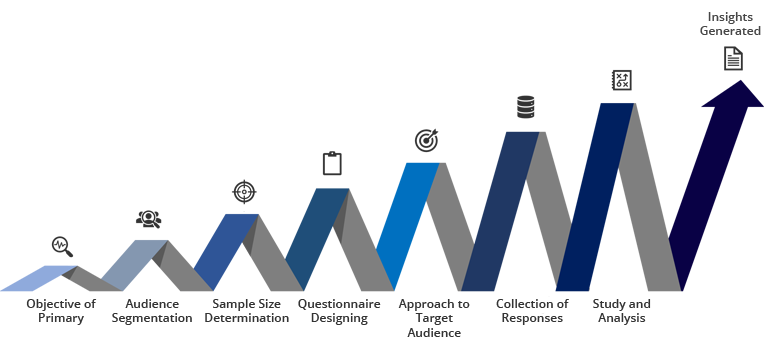Primary research is a methodology to collect data for any study directly from persons related to a field or area of study instead of collecting data from research or analysis conducted previously. Primary research is to solve specific problems related to the task.
Primary research gives ownership of collected data to the person who is carrying study. It allows the person or researcher to gather new data, which can be considered more authenticated in studies. Prime Research is also sometimes called field research.
Primary Research Methods:
Primary research is conducted by a diverse method that depends on the demand of data to be collected, the type of study to be undertaken, the study’s context and objective, and the subsequent subheadings.

- Interview: The interview is to conduct primary research in which data is gathered from key persons related to the study field. This process is done by engaging in a face-to-face or telephonic interview. Usually, interviews are conducted based on a pre-designed questionnaire that makes respondents comfortable sharing their thoughts. The duration of one interview depends on respondents, research objectives, and time frame for the research. Interviews allow the researcher to assemble in-depth, authenticated information about the subject, improving the study’s outcome.
- Surveys: A survey is a typical method to conduct primary research. Surveys are context-specific, collecting data from an exact target audience. It consists of a questionnaire mostly close-ended for gathering information. Surveys are for getting the opinion from a target audience who can be considered the same type of audience, for instance, consumers of specific products, employees of a particular industry, etc. Surveys can be biased or unbiased, which is defined by a questionnaire. Surveys are conducted offline and online, but technological developments have made online surveys more convenient.
- On E-mail: E-mail interviews are very recent in conducting primary research. It saves time and money for the researcher, and written responses are easy to convert into transcribed data. An E-mail interview gives the researcher the power to customize questions to be asked based on the first response. It allows the researcher to dig down for information due to no limitations of time and the researcher and respondents’ direct involvement.
Methodology:
All type of research consists of a methodology that provides steps or flow-layout of research for conveniently conducting the research methods of primary research are:

- The objective of Primary: The aim of primary is to get better accuracy of data for resolving specific research issues and up-to-date information. Primary research aims to help the researcher make a roadmap for the study, allowing smooth study flow.
- Audience Segmentation: Audience segmentation divides people into the same group based on geography, age group, profession, and many more, according to research. Audience segmentation is necessary to get information for better insight as a perspective for a product. Technological advancement differs in a different geography, demography, psychography, and behavior or respondent. Also, some information is captured from decision-makers for any organization or company, so audience segmentation is necessary.
- Sample Size Determination: In this step, the sample size is decided to be taken from each geography, age group, profession, or any other type of respondent to get more authenticated data covering all angles of study. Sample size refers to the number of participants or observations included in a survey for different respondents. The sample size is essential to gather information in the proper ratio as population differs from geography to geography it is necessary to keep the sample size in approximately that ratio to get better insight, also information differs from the rank of decision making. Sampling error, though unavoidable, can be eased by sample size. Larger samples tend to be associated with a smaller margin of error.
- Questionnaire Designing: A list of questions prepared to get responses for gathering the information or resolving a specific study problem. The questionnaire design plays an essential role in ensuring accurate data collection as respondents only answer questions and do not add any additional information on their behalf. The questionnaire should be a good mixture of close-ended and open-ended questions and should not be biased, which is achieved by the questionnaire’s proper design.
- Approach to Target Audience: This step comes after preparing the questionnaire target audience is approached through the mail and call to get responses and survey messages or web advertisements. The audience is adequately approached, and it is crucial to create an interest in respondents to give the information. The target audience is appropriately approached by proper means: social media, mail messages, or calls.
- Collection of Responses: Responses taken from the various methods are transcribed and collected for further evaluation. This step also involves the segmentation of data based on a different group of respondents.
- Study and Analysis: collected responses are then studied, evaluated, and analyzed to generate insights from the survey.
Advantages of Primary Research:
Primary research is to solve any specific problem in the study. The advantages of primary research are as follows:
- Primary research provides more accurate data for the study.
- Data gathered from primary research is more authenticated.
- Primary research gives problem-specific insights that lead to more objective findings.
Disadvantages of Primary Research:
Despite the advantages, primary research also has some drawbacks, which are:
- Primary research is expensive. It requires huge investments.
- Primary research is exhaustive and more time-consuming.
- Primary research is not feasible in many cases.
Conclusion:
Primary research is vital for businesses or organizations. It gathers direct and first-hand information to take strategic decisions further and plan to increase business or operations profitability.



